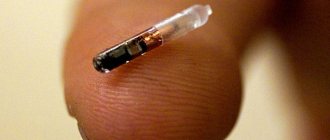6929Pavel
In cases of serious illness, all pets require medical attention. And often it has to be provided at home. If it is necessary to give an animal an IV or remove fluid from the bladder, many owners ask questions about how to place and remove a catheter from a cat.
Thanks to this device, it is possible to avoid constant injections. The catheter allows you to give your pet a drip or injection at any time necessary.
© shutterstock
And in the postoperative period or in case of diseases of the urinary system, this device allows you to empty the animal’s bladder of excess fluid completely painlessly.
What it is?
Catheterization of the bladder in cats is necessary for the treatment of urolithiasis, cystitis and other pathologies of the genitourinary system. The procedure can only be performed by a veterinarian, as a person without special knowledge can cause serious injury to the penis or urethra.
With the help of catheterization, you can introduce the necessary medications into the organ, alleviate the cat’s condition, and also take urine for further research. The event, carried out in a veterinary clinic, is harmless to the animal, since only experienced doctors are allowed to perform it.
Removing the urinary catheter
A Faley catheter is a thin tube that drains urine into a special bag. Its removal is necessary in cases where :
- the catheter stops functioning;
- the animal has suffered an injury to the urethra or bladder;
- The problem causing the device installation has been resolved.
The procedure for its removal is carried out only by a veterinarian. You should not try to carry out such an operation at home by watching videos from the Internet. Removing the catheter on your own can result in injury to the mucous membrane of the urinary tract.
To whom is it assigned?
The main indications for performing the bladder catheterization technique in a cat include:
- Urolithiasis disease.
- Idiopathic cystitis.
- Various obstructions of the urinary canal.
- Collecting urine for analysis.
- Bladder surgeries requiring permanent absence of urine.
- Inflammation of the urethra.
- Disorders in which the pet cannot urinate on its own (paralysis).
Indications for catheterization
Inflammation of the kidneys and intestines are the main indications for catheterization. A blocked bladder increases potassium levels (hyperkalemia), which affects the heartbeat and can lead to the death of your pet. Once a urinary obstruction is identified, emergency treatment and stabilization are required.
Catheterization is performed for:
- Diagnosis of urolithiasis.
- One-time urine collection for analysis if excretion through cystocentesis is not possible.
- Inclusions of contrast agent during examinations.
- Obstruction therapy.
If your cat has chronic kidney disease, the urethra may need to be dilated. This procedure is designed to provide a permanent opening that allows crystals, mucus plugs, or small stones to pass out of the urethra.
In most cases, a dose of general or local anesthesia is administered before the procedure. Infection of the renal pelvis, kidney stones, and chronic renal failure are possible consequences of recurrent urethral obstruction.
Preparation
As a rule, before starting the procedure, the specialist carries out a number of preparatory measures, which include:
- Research for contraindications and reasons for catheterization. If this procedure is not possible, other methods of removing urine from the organ are chosen as treatment.
- Anesthesia. It is necessary so that the pet does not feel pain during all manipulations. Without pain relief, the cat can harm both itself and the veterinarian. Sedation or general anesthesia is most often used. The first option applies to pets with lack of appetite, severe intoxication, various functional disorders and a prolonged course of the disease. The second option is used in animals whose condition is assessed as satisfactory, without severe intoxication and without heart and vascular diseases. Catheterization of the bladder in cats without anesthesia is carried out only in the case of an extremely serious condition of the animal.
- Hygienic measures. Before the procedure, the hair from and around the penis is shaved, and the skin is disinfected. This is necessary to prevent pathogenic microflora from entering the bladder.
- Additional pain relief. Various local aerosol analgesics are used as local anesthesia. This further reduces sensitivity, since the head of the penis contains many nerve endings. Without analgesia, the cat will feel pain even under anesthesia.
How to remove an intravenous catheter
The cat owner has to carry out this procedure 5 days after installation, in case of mechanical damage to the catheter, or if the pet’s limb with branula is swollen.
© shutterstock
The catheter is usually located on the cat's front legs. It is fixed with the turn of a regular adhesive plaster. In order to remove the intravenous catheter from the cat, it is enough to cut this dressing from bottom to top. Then the remaining patch must be carefully removed from the pet's hair. After this manipulation, you can remove the catheters from the cat’s paws by pulling out the plastic tube from the vein. Apply a thick bandage soaked in alcohol to the previous location of the scold, and bandage the paw for the next hour.
When carrying out this procedure, you should pay attention to the fact that:
- When the device is pulled out, the animal may try to escape. Therefore, removing a cat’s catheter at home is much easier with two people;
- when pulling out the tube, the movement should be careful, but as fast as possible;
- instead of alcohol, you can use a solution of furatsilin or hydrogen peroxide to wet the disinfectant swab;
- If suspicious symptoms appear after removing the catheter, it is better to seek help from a veterinarian. Such uncharacteristic signs when removing the device include: swelling of the extremities, discoloration of the skin, lameness or clenching of the paw, pain on palpation, development of hyperthermia, lack of appetite, weak and apathetic state;
- It is best to use nail scissors to cut the patch, as they will remove the bandage more accurately. If the animal twitches, then it is better to give preference to a device with rounded ends.
Bladder catheterization in a cat: how to do it
The procedure is carried out as follows:
- A catheter with a mandrel lubricated with lubricant is inserted into the lumen of the urethra. Lubrication is necessary to ensure that the instrument does not damage the walls of the urinary canal.
- If the device encounters various obstructions before entering the bladder, then a special solution is injected through the catheter, destroying the plugs and facilitating its further advancement.
- When the instrument enters the bladder, urine begins to flow out. By smell and color, the veterinarian can determine the condition of the organ and prescribe appropriate therapy. Part of the urine is taken for further testing.
- If there is blood in the urine, we can say that the integrity of the walls of the organ is compromised. In this case, the specialist rinses the bladder with a special solution, most often novocaine, to remove crusts and blood clots that have formed in the organ, as well as to prevent the problem from reoccurring.
- If necessary, the catheter is left in place for several days. This is necessary so that urine is artificially removed from the body. In this case, the pet is prescribed medication and diet therapy to help relieve acute symptoms.
Why is a catheter placed?
Urinary retention in a cat (obstruction) is the result of plugs of inflammatory material, mucus, crystals, small stones that have formed in the kidneys and entered the bladder. The causes of inflammatory materials and stone formation are not fully understood.
The obstructive structure in pets is a sandy plug of mucus and sand that forms in the bladder over time. Pets may experience difficulty urinating regardless of age. The anatomy of the end of the cat's urethra is narrow. As the condition progresses to complete blockage of urine, the symptoms become more intense.
View this post on Instagram
Injecting fluid through a catheter❗️ • We often encounter a situation where animal owners worry about the catheter, that it may interfere or cause pain to the pet











